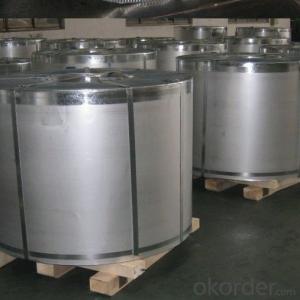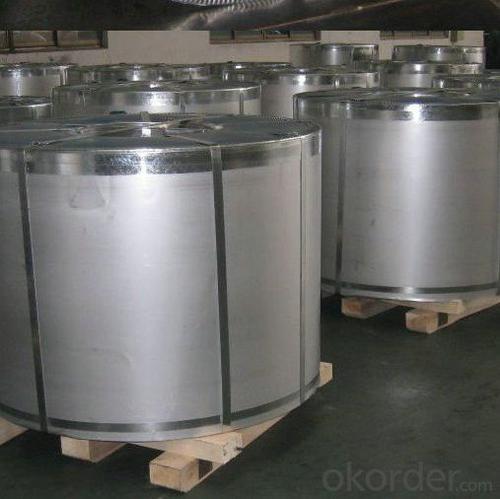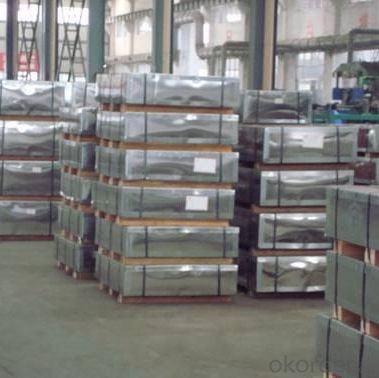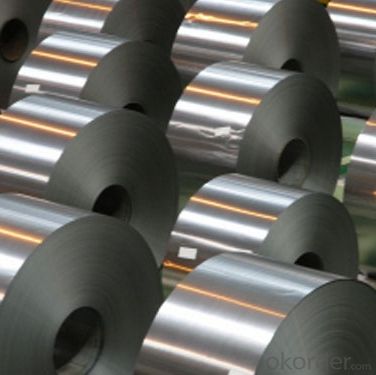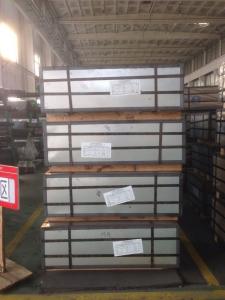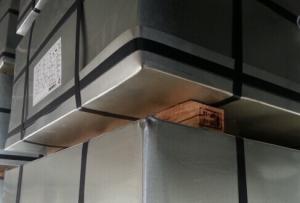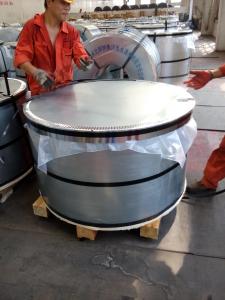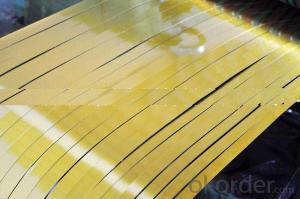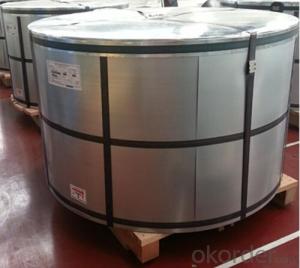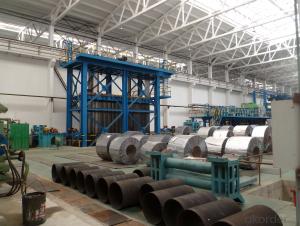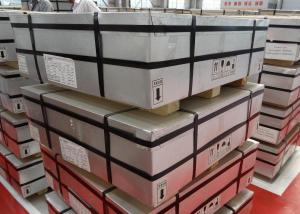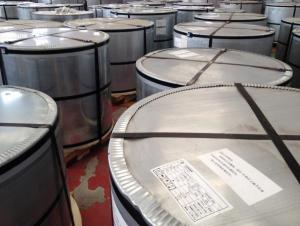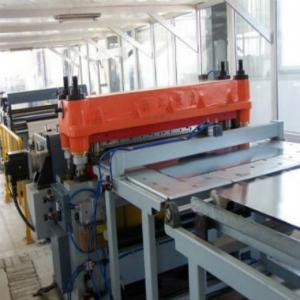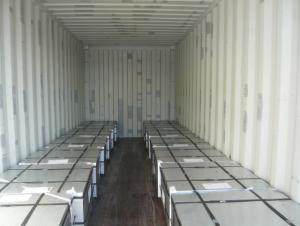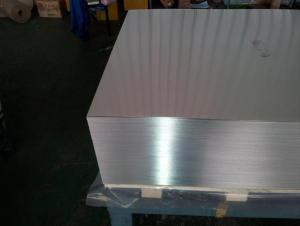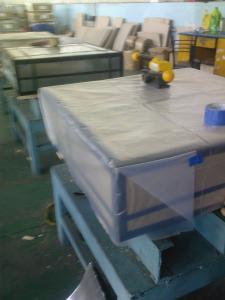Tinplate for Food Pakcaging with Prime Quality
- Loading Port:
- Tianjin
- Payment Terms:
- TT OR LC
- Min Order Qty:
- 25 m.t.
- Supply Capability:
- 30000 m.t./month
OKorder Service Pledge
OKorder Financial Service
You Might Also Like
Specification
Tinplate for Food Pakcaging and Chemical Packaging
Specifications
Prime electrical tinplate:
Thickness: 0.15 to 0.50mm
Width: 600 to 1010mm
Temper grade: BA and CA
For metal packaging usage
The Tinplate specification as following:
1, Reference standard: GB2520-88, JIS G3303-1997 and DIN EN10203-91
2, Material: MR, SPCC
3, Thickness available: 0.15mm to 0.50mm
4, Width available: 600mm to 1010 mm
5, Temper grade: T1 - T5 BA and CA both.
6, Tin coating: ordinary 2.8g/2.8g, 5.6g/5.6g, We also can produce according to customers' requests
7,Coil diameter: ID 420/ 508mm, OD from 1,000 to 1,250mm
8,Package: Anti-rust paper,corner protected. by sheet or coils according customer's require.
9, Applications: metal package usage like paint, chemical can,aerosol can and different food can production,
Also battery,electric cable and other industries
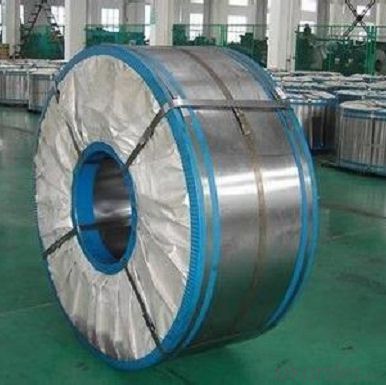
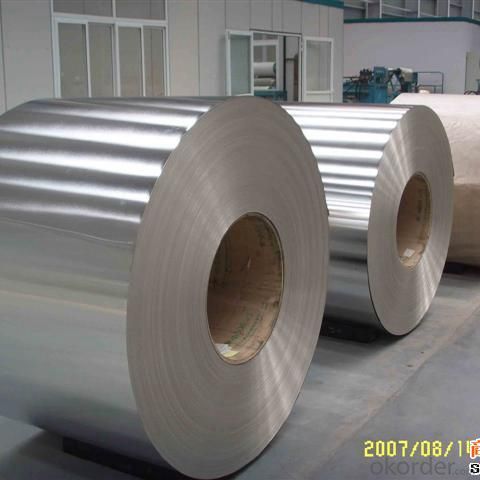
| Tinplate specifications | |||
| Steel Type | SPCC, MR | ||
| Temper(BA&CA) | T1~T5 | ||
| Coating | 1.1~11.2g/m2 | ||
| Thickness and tolerance | 0.15~0.50mm(Tolerance: _+0.01 mm) | ||
| Width & tolerance | 300~1000mm (Tolerance: 0~3mm) | ||
| Cut length & tolerance | 450~``50mm (Tolerance: 0~3mm ) | ||
| Coil inside diameter | 420/508mm | ||
| Coil Weight | 3~10 MT | ||
| Passivation | 311 | ||
| Oiling | DOS | ||
| Surface Finish | Bright, Stone, Silver, Matte | ||
| Packaging | Seaworthy Standard with wooden pallet | ||
| Standards Available | GB/T2520, JIS G3303, ASTM A623M & EN10202 | ||
| Special specitications are available on request. | |||
| Tin coating weight | |||
| Type | Designation of tin coating weight | Min.average tin coating weight(g/m2) | Former Coating Designation |
| Equal tin coating | 1.4/1.4 | 1.2/1.2 | #15 |
| 2.2/2.2 | 2.0/2.0 | #20 | |
| 2.8/2.8 | 2.45/2.45 | #25 | |
| 5.6/5.6 | 5.05/5.05 | #50 | |
| 8.4/8.4 | 7.55/7.55 | #75 | |
| 11.2/11.2 | 10.1/10.1 | #100 | |
| Differentially Coating | 1.4/2.8 | 1.2/2.45 | #15/25 |
| 2.2/2.8 | 2.2/2.45 | #20/25 | |
| 2.8/5.6 | 2.45/5.05 | #25/50 | |
| 2.8/8.4 | 2.45/7.55 | #25/75 | |
| 2.8/11.2 | 2.45/10.1 | #25/100 | |
| 5.6/8.4 | 5.05/7.55 | #50/75 | |
| 5.6/11.2 | 5.05/10.1 | #50/100 | |
| 8.4/11.2 | 7.55/10.1 | #75/100 | |
| Surface finish | |||
| Surface finish | Nominal surface roughness (um Ra) | Characteristic | |
| Bright finish | ≤Q0.35 | Glazed surface obtained after melting treatment of electrotinned smooth raw materail strip with extremely fine rubstone fingure by processing. | |
| Stone finish | 0.25~0.60 | Glazed surface obtained after melting treatment of electrotinned smooth raw materail stripfeaturing certain rubstone figures. | |
| Silver finish | 0.50~1.00 | Glazed surface obtained after melting treatment of electrotinned smooth raw material strip with rough matt furface. | |
| Matte finish | 0.80~2.50 | Matt surface of general matt raw material strip without melting treatment. | |
- Q: What are the benefits of using tinplate for pharmaceuticals?
- Tinplate offers several benefits for pharmaceuticals, including its excellent barrier properties that protect the medication from moisture, oxygen, and light. It is also resistant to corrosion, ensuring the integrity of the product throughout its shelf life. Moreover, tinplate is easy to sterilize, making it an ideal material for packaging drugs. Additionally, tinplate is sustainable, as it is 100% recyclable, reducing the environmental impact of pharmaceutical packaging.
- Q: The difference between a matte tin plate and a bright tin plate
- Silver tinplate:Silver surface processing refers to the original plate in plating passivation treatment after reflow treatment and the surface has a unique stable luster; after printing and coating, the operation of creating a gorgeous and elegant atmosphere, used in the manufacture of advanced art cans, nuts, etc..
- Q: What are the different methods of recycling tinplate packaging?
- The different methods of recycling tinplate packaging include sorting, cleaning, shredding, melting, and reprocessing. Sorting involves separating tinplate packaging from other materials. Cleaning removes any contaminants from the tinplate. Shredding breaks down the tinplate into smaller pieces. Melting helps to separate the tin coating from the steel base. Finally, reprocessing involves transforming the separated tin and steel into new products or materials.
- Q: What are the different types of tinplate coatings?
- There are several different types of tinplate coatings used for various purposes. These include electrolytic tinplate (ETP), tin-free steel (TFS), black plate, and lacquered tinplate.
- Q: How does tinplate packaging withstand extreme temperatures?
- Tinplate packaging is able to withstand extreme temperatures due to its high melting point and excellent heat resistance properties. The tin coating on the steel base provides a protective layer that helps to prevent the metal from warping or melting when exposed to extreme heat. Additionally, the structural integrity of tinplate packaging is maintained even in extreme cold temperatures, making it a reliable choice for preserving the quality and safety of various products.
- Q: What are the advantages of tin packaging?
- 1. good mechanical properties: tinplate cans relative to other containers, such as plastic, glass, paper containers and strength, and good rigidity, it is not easy to break. It is not only used for small sale packing, but also the main container for large transportation package.2.: excellent barrier tin barrier properties than any other materials are excellent, gas barrier properties, moisture resistance, shading and aroma were good, and the sealing is reliable, reliable protection products.
- Q: What are the main export markets for tinplate?
- The main export markets for tinplate include countries such as China, Japan, Germany, South Korea, and the United States.
- Q: How does tinplate compare to plastic in terms of sustainability?
- Tinplate generally has a better sustainability profile compared to plastic. Tinplate is made from steel, which is a widely recycled material, and it has a high recycling rate. Plastic, on the other hand, is derived from fossil fuels and has a lower recycling rate. Tinplate is also more durable and can be reused multiple times, whereas plastic is often single-use and ends up in landfills or as litter. Additionally, tinplate has a lower carbon footprint and contributes less to environmental pollution compared to plastic. Overall, tinplate is considered a more sustainable packaging option.
- Q: How does tinplate packaging contribute to product protection against odors?
- Tinplate packaging contributes to product protection against odors primarily through its excellent barrier properties. The tin layer on the surface of the packaging acts as a barrier, preventing the transfer of odors from the outside environment to the product inside. This helps to maintain the product's freshness and quality by effectively sealing off any potential odor contamination.
- Q: How does tinplate perform in terms of durability and longevity?
- Tinplate is known for its exceptional durability and longevity. Its protective tin coating acts as a barrier against corrosion and prevents the underlying steel from rusting. This makes tinplate highly resistant to environmental factors and ensures its long-lasting performance even in challenging conditions. Additionally, tinplate's strength and rigidity contribute to its durability, making it suitable for various applications where longevity is crucial.
Send your message to us
Tinplate for Food Pakcaging with Prime Quality
- Loading Port:
- Tianjin
- Payment Terms:
- TT OR LC
- Min Order Qty:
- 25 m.t.
- Supply Capability:
- 30000 m.t./month
OKorder Service Pledge
OKorder Financial Service
Similar products
Hot products
Hot Searches
Related keywords
